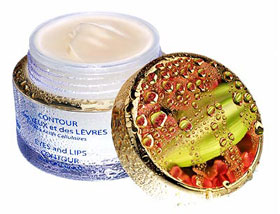Textile industry of Uzbekistan: Custom-designed wastewater treatment facilities
Textile industry is one of the most priority branches of economy in Uzbekistan. This becomes possible due to the availability of rich and high-quality raw material– cotton and silk. Today, Uzbekistan is ranked fifth in the export of raw cotton, and the second – in the export of textile goods. Currently, textile industry forms the 5th part of the gross domestic product of the country. Also the third part of industrial workers is engaged in this social oriented industry. If in the earlier 90s the situation was different, the volume of processing of cotton fiber did not exceed 7 %, by 2016, after getting the independence, this index has reached 40% due to the reorganization of Uzbek industry . The targeted state economic policy, oriented on diversification and modernization, improvement of the domestic industry competitiveness, support for development of its leading industries and increasing of export potential by intensification of processing the local raw materials had been implemented.
The production capacity of the industry is 450,000 tons of yarn, 296 million square meters of fabrics, 90,000 tons of knitted fabric and 270.2 million of knitted garments per year. Nowadays, the export of products has increased 120 times - up to $ 1 billion against $ 7 million in 1991. The products labeled “Made in Uzbekistan” are exported to more than 50 countries, including EU, CIS region, South American countries, Korea, China, Singapore, Iran, Israel and USA. Uzbek textile is also popular in Pakistan, Georgia, Croatia and Nigeria .
The indicators of implementation of modern technologies and development of technical equipment of production facilities have increased. More than 1.6 million of spinning spindles and 100,000 chambers were commissioned, that equal to 89.3% of existing technological equipment.
Our life dictated by and is directly connected with development of modern technologies. This evolutionary-positive influence has its risks and might have negative impact on the environment. In response to this, most of the countries, including Uzbekistan are constantly improving the environmental legislation and applying new laws and standards for business operation. One of the main requirement and standard is related to industrial water treatment facilities. In average, 2.7 thousand liters of water are required to produce only one shirt, therefore high demands in water treatment is relevant in the textile industry.
At current stage of development, the main products of textile industry are cotton, linen, wool and silk, yarn, fabrics made from natural and chemical fibers, their mixtures and its ready products. This industry includes spinning, twisting, weaving, dyeing and sewing plants, where the majority of industrial wastewater is formed in dyeing plants, and during the sizing of yarn, chemical treatment of fibrous materials and finishing of textile fabrics.
The contamination of wastewater from dyeing and finishing plants has a complex content of insoluble organic and mineral impurities, colloidal and true solutions. Therefore, it requires more specific approach to the organization of wastewater treatment process.
The technological scheme of wastewater treatment with detailed description of the main equipment and layout of its components for dyeing of knitted fabric are shown as an example of effective treatment facilities for this industry.
Description of technological solutions of proposed scheme
According to the proposed treatment scheme, the industrial wastewater is directed to receiving section of sewage pumping station once its passed the mechanical screen of fine grating. The proposed installation for mechanical wastewater treatment allows receiving the waste suitable for disposal in solid waste disposal plant. After passing through the screen, to collect and neutralize wastewater, it is directed to the neutralizing storage.
For treatment of industrial wastewater, we propose to use pressure flotation unit, which allows to achieve high efficiency of treatment of suspended substances, COD, fats and to partially remove the dissolved impurities.
The treated wastewater flows under gravity into the existing pressure collector.
For dehydration of sediment, formed during purification (floto foam and float sludge), we suggest to use mechanical dehydration system based on screw press as an option (produced by HUBER).
General technical data
The estimated costs for wastewater:
- Wastewater flow rate - 1000 m3 / day;
- Maximum per hour - 42 m3 / h .;
The composition of incoming wastewater is given in the Table 1.
The qualitative indicators of waste water and maximum permissible concentration
|
No. |
Indicator name |
Unit |
Indicators of incoming wastewater |
MPC |
|
1 |
Suspended substance |
mg/dm3 |
310 |
500 |
|
2 |
Synthetic surface-active substance; |
mg/dm3 |
9,6 |
20 |
|
3 |
Chemical oxygen demand |
мгО2/ dm 3 |
840 |
500 |
|
4 |
Biological oxygen demand |
мгО2/ dm 3 |
201,3 |
30 |
|
5 |
Sulphate |
mg/ dm 3 |
269,9 |
500 |
|
6 |
Chloride |
mg/ dm 3 |
1601,7 |
350 |
|
7 |
рН |
Unit |
10,5 |
6,5-7,2 |
Mechanical treatment of industrial wastewater
The drum screen with gap of 2.0 mm is used for mechanical treatment of wastewater of main production of coarse waste.
The installation is designed for operation in industrial wastewater treatment facilities. It is the first stage of wastewater treatment process.
Principle of screen operation
The contaminated wastewater is pumped into receiving chamber of drum screen, where the flow rate is decreased. Then, water directed to drum screen with cell size of 2.0 mm, then to the outlet branch. Mechanical inclusions, the size of which exceeds 1 mm, remain on the surface of the screen, where they are removed and director to the waste container by scraper mechanism, located at acute angle to the screen.
Node of pressure flotation of industrial wastewater
After the screen, the wastewater is directed to neutralizer, where by submersible pump with average flow of 60 m3/h it is directed to physicochemical purification - into the flocculant.
The neutralizing of wastewater is necessary to smooth irregularity of waste flow and polluted waste water to physicochemical purification, and pH leveling.
It allows to achieve the stable high efficiency of wastewater treatment during flotation treatment and to reduce the amount of introduced reagents.
In order to prevent the sedimentation of suspended substances in neutralizer, the stirring mechanism, made of stainless steel can be installed.
Physicochemical purification
The physicochemical purification is proposed to be carried out by the method of reagent pressure flotation.
Dosing of coagulant, alkali and flocculant solutions is made by high-precision dosing pumps. The adjustment of pH is performed by using of automatic pH control system that controls the alkali dosing pump. Preparation of 0.1% working solution of the flocculant is carried out by station for the preparation of flocculant solution.
Pressure flotator with chemical stage
Flotation is the process of molecular adherence of floated material particles to the interface of two phases, usually gas (more often - air) and liquid due to redundancy of free energy of surface boundary layers and surface phenomena of humidification.
A set of each installation includes automatic control panel, components necessary for its complete automatic operation, as well as chemical stage.
Operation mode of pressure flotation unit
Flotation of industrial wastewater consists of the formation of “particle-bubble” complexes, the floating of these complexes and removal of formed foam layer from the surface of treated liquid. Its particles can adhere to the surface of gas bubble only when there is no humidification or poor humidification of the particle by liquid. Saturation of wastewater with air and using of reagents can significantly improve the quality of water in the following indicators: suspended substances, fats and oils, phosphates, BOD and COD.
|
Before purification |
In mixing basin after addition of reagents
|
After reagent flotation |
|
|
||
The suspended substance and impurities, contained in wastewater are removed in flotation process by the smallest bubbles (30-50 microns).
The part of wastewater coming from the flotator is supplied as the recycling water and saturated with small air bubbles for pumping by two-stage centrifugal pump. This pump led to the process of air dissolution.
The water saturated with air is directed from nozzles to the mixing zone of the flotator; in the flotator, the pressure drops sharply under the inlet of the wastewater. Due to the regular supply of pressurized water to the flotator, air bubbles are adhered to the particles of contaminants and rise to the surface. The sediment layer on the surface is removed by the scraper. The sediment is collected into special storage tanks and removed by using of pneumatic valve, which regulated by timer.
The actual flotation area, in comparison with similar installations, is increased due to design features. This provides higher capacity of removing the contaminants and compact of installation.
Flotation mud and sediment are collected from the flotator into the tank and directed to mechanical drying.
The ready to use coagulant and alkali is imported in "eurocubes": LxBxH: 1170x1260x1040 mm, the containers procured once and can be served as the replacements.
Processing of float foams and float mud
During wastewater treatment with volatile organic compound, the following types of precipitation are formed: coarse waste from the screen-sand separator, float foams and float mud from the flotator.
The waste from the screen is collected into containers and transported by vehicles to the solid waste landfill.
In order to dehydrate the formed sediments and reduce their volumes, we suggest to install the screw press.
Screw press consists of:
- Filtering cylindrical drum with three press zones and decreasing gaps;
- Screw with expanding conical shaft and decreasing course of screw turns;
- Reduction drive with variable speed of rotation (from 0.3 to 1.5 rpm);
- Press cone with pneumatic drive;
- Unloading shaft
Press can be divided into several working areas:
- Loading and drive area;
- Compression zone;
- Dehydration zone;
- Pressing zone with pneumatic pressing cone for creation of back pressure.
In compression zone, the supernatant water is rapidly filtered through the gaps of filter drum under inlet pressure created by the supply pump. The pressure sensor in the loading zone measures the inlet pressure of silt-water mixture and ensures the constant high quality of the filtrate. Typical inlet pressure is 20 - 300 mbar.
In dehydration zone, the sediment is continuously dehydrated due to the rotation of the screw and pressure build-up under the gravitational forces. The volume of pressed sediment (cake) is decreasing constantly. In this section the gaps of filter drum are significantly narrower than in the first section.
In pressing zone with the minimum thickness of the cake, the remaining water from the sediment is squeezed out by means of adjustable pneumatic pressing cone of backpressure. The dehydrated sediment is pressed at the edge of the cone and disposed through the discharge shaft.
By adjusting the screw speed, it is possible to choose the residence time of the precipitation in the screw press and filtration time that complies with the requirements for the degree of sludge drying.
The cleaning of filter drum:
Ø Inside cleaning of the drum surface – with rubber patch, fixed to the edge of the flight screw (as the experience has shown, the rubber patch is more efficient in cleaning and compression, and has better durability than the brush). Cleaning is carried out continuously while the screw rotates;
Ø Outside cleaning of drum gaps – with water at a pressure of 5-7 bar. Under pressure the water is supplied from sprinkler pad. Tap water (standard) or recycling water (special execution) can be used for washing. The cleaning is performed automatically. The cleaning cycle time is approximately 40 - 50 seconds. The frequency of cleaning - once in an hour is set by the user in the control program.
Set of equipment
|
No. |
Equipment name |
Q-ty |
|
Mechanical treatment |
||
|
1. |
Submersible Sewage Pump, Qwork =60m3/h with level gages |
1+1 |
|
2. |
Fine screen Qwork =60m3/h with gap of 2mm.Discharge of detained waste and sand into the container. Material of execution: AISI 316 |
1 |
|
Neutralization |
||
|
3. |
Stirring unit |
1 |
|
4. |
Submersible Sewage Pump From neutralizer to Flocculator, Qmax =60 m3/h, |
1+1 |
|
Pressure reagent flotation |
||
|
5. |
Pressure flotation station, Q=60m3/h, including: Ø Flocculator, Q=60 m3/h, execution: corrosion-resistance material Ø Diaphragm pump-doser of coagulant solution; Ø Diaphragm pump- doser of alkali solution; Ø The device for measuring hydrogen index (pH) with the control unit of the pump-alkali doser Ø Automatic station for preparation of solution of 0.1% flocculant: 1000 l / h; Ø Dosing pump of the flocculant solution, the version: corrosion-resistant material, Q 100-500 l / h, with frequency regulation Ø Pressure flotator, AISI 316, Q=60 m3/h; Ø Maintenance service; Ø Coagulant preparation station; Ø Pump for removal of flotation sludge from the flotator. |
1 |
|
6. |
Sludge drying Sludge drying unit: Ø Decanter centrifuge, Qwork=1-4 m3 / h. Ø control box; Ø Sludge supply pump Qwork = 1-4 m3 / h; Ø Sludge flow rate measuring device; Ø Automatic solution preparation station 0.05% -0.5% of flocculant for dosing the solution; Ø Flocculant dosing pump, Qwork = 0,2-1,0 m3 / h; Ø Flocculant consumption measuring device. |
1 |
As it can be seen from the data, various highly qualified personnel - engineers, economists and environmental specialists are required for design of the most efficient drainage and water treatment systems with consideration of economic and territorial features of the target industry, construction (reconstruction) of facilities, manufacture of special equipment, connection of engineering communications, installation and commissioning.
The services for design and construction of water disposal and water treatment facilities, as a rule, are provided by the specialized design institutes. The manufacture of special facilities is provided by the engineering equipment manufacturers. Moreover, the Client needs the services of specialized companies to obtain the guarantees of compliance with all technical and economic requirements. The Client bears all significant financial costs and makes best efforts to agree all necessary steps of various instances or searches the universal service providers according to all above mentioned requirements.
Today, such services can be performed in Uzbekistan only by small number of organizations. UBI Consulting LLC is one of them.
UBI Consulting LLC is ISO and OHSAS certified multi-industrial engineering and consulting company. The company is engaged in distribution of wastewater treatment facilities made by the leading manufacturers. UBI Consulting can provide manufacture and supply of engineering equipment of container-type and made of fiberglass, HDPE, metal, underground and surface construction for industrial, rain and domestic wastewater treatment; as well as the wastewater treatment equipment - the pumping equipment, grids, screens, etc.
UBI Consulting provides the services for:
- Design
- Survey
- Repair
- Replacement of equipment
- Scheduled and unscheduled technical maintenance
- Personnel training
- Operation of treatment plants
- Installation works
- Commissioning
- Manufacture of standard and non-standard equipment;
Currently, the manufacture of industrial treatment plants and its associated components has not yet been established in Uzbekistan. UBI Consulting as the supplier of custom-designed and tested equipment and plant will provide to the clients a success of set goals and further mutually beneficial cooperation.
UBI Consulting Design, supply and commissioning of special treatment facilities for various enterprises of Uzbekistan http://uza.uz/ru/business/legkaya-promyshlennost-po-puti-rasshireniya-vypuska-gotovoy--31-01-2017 http://www.mfa.uz/ru/press/news/2016/07/7983/
 КАТАЛОГ СТАТЕЙ.
КАТАЛОГ СТАТЕЙ.




